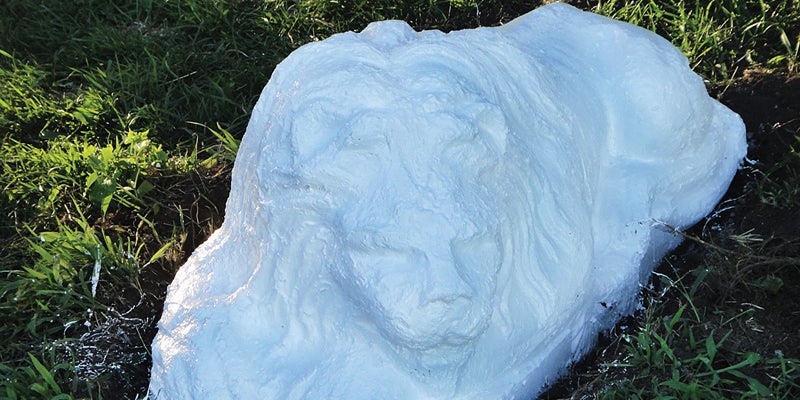Myths and mix-ups with the Underground Railroad
Published 9:16 am Friday, July 29, 2016
In our attempt to present the most comprehensive, truthful account of the Underground Railroad in Cass County, there are recurring questions about several issues. Here is our current understanding regarding some of these questions.
More information can be found on our website www.urscc.org.
1. The Bonine House tower was used to look for slave catchers — The Bonine House is actually two houses. The first was built around 1845 and was classic Greek Revival. It was two bedrooms upstairs and two parlors downstairs.
After the Civil War, James E. Bonine remodeled his home in the Second Empire fashion, adding the tower and the north addition. Therefore the tower wasn’t used as a lookout for slave catchers — it didn’t exist during the UGRR.
2. Tunnel from the Bonine House to the Carriage House — Lots of talk, but none found so far. There is a small crawl space under the original house, which was during the UGRR. There is a basement under the remodel, but that was after the Civil War. People raised in the home say they have never found a tunnel. However, there is evidence of a tunnel under Penn Road.
James had several houses and barns, and tunnels could have been used for many reasons. The Carriage House was built in the early 1850s. There is lots of evidence that freedom seekers were sheltered there, but they likely came directly there.
This was a relatively safe haven for freedom seekers. There was really no need for tunnels. However, URSCC is committed to finding the answer to this enduring question. We’ll keep you posted.
3. Two lions in front of the Bonine House — while several people swear there were two lions, we have yet to see a photo of two lions. Mary Charlotte Bonine Roberts, who lived there from 1934-53 remembers only one lion. The Wright siblings remember only one lion.
Some say that Betty Harris purchased two lions and put them in front of the house. Perhaps this is the source of the claim. If you have evidence of two lions, please let us know.
4. Howell Lawson vs. Lawson Howell — Many sources say the first fugitive slave in Cass County was named Lawson and he came here with a Quaker preacher named Henry Way in the early 1840s. It was assumed that the extensive Lawson family is descended from this man. Indeed Howell Lawson is listed on the 1850 census in Calvin Township. However, he is not listed like that in any other source. Rather he is named Lawson Howell on land records, marriage records and in the 1860 census.
Lawson Howell was one of the first trustees of Mt. Zion Church. There is a long paper train from Lawson Howell but, none at all for Howell Lawson. Apparently his name was reversed on the 1850 census. Therefore, he is no relation to the Lawson family.
5. Location of Ramptown — James E. Bonine purchased Sec. 33, south of Michigan 60 and west of Calvin Center in 1853 and invited freedom seekers and free blacks to settle there on 5-10 acre plots. In exchange for clearing the land, they could build a cabin, grow their own food, send their children to school and earn their own money.
The community of around 30 cabins came to be called Ramptown because of the wild leeks that grew there. When the arrangement ended, many purchased their own farms and became prosperous members of the community. In 2002, Western Michigan University did an archeological survey that verified the existence and location of Ramptown being on Sec. 33 of James E. Bonine’s property.
However, this conclusion was misinterpreted and led to the belief that Ramptown was a dispersed settlement over several townships and Quaker farms. There is not one piece of evidence that Ramptown was anywhere but Sec. 33 of James E. Bonine’s property. There is however, a great deal of evidence for the Bonine location. You can read many of the citations on our website urscc.org. WMU has since corrected this misinterpretation; however it lingers in the public mind.
6. William Jones of Penn vs. William Holman Jones of Calvin — These two men and their stories have become intertwined over the years and only recently has the confusion been cleared. William Jones (no middle initial) is related to the extensive Jones family in Cass County and was a very early Quaker pioneer.
He was a staunch abolitionist and a stationmaster on the Underground Railroad. He was a nephew to UGRR conductor Stephen Bogue, and played an important role in the 1847 Kentucky Raid, documented by eye witness Perry Sanford. William Jones became a very prosperous farmer and long-time resident of Penn Township. His home still stands on Gards Prairie Road and is listed on the URSCC Driving Tour.
William Holman Jones was born in Bourbon County, Kentucky and came to hate slavery. He moved to Indiana, then to Calvin Township in 1840. He is noted in the Matthews “History of Cass County” as being a slave runner, along with Wright Modlin.
He served a term as treasurer in Calvin Township. William H. Jones was a major player in the Kentucky Raid, and was a defendant in the trial in Detroit. Although that case was settled and dismissed, Jones lost his farm and moved to Kansas in 1857, according to his obituary.
7. Quakers and other defendants lost the Kentucky Raid civil suit brought by Kentuckians in Detroit in 1849 — Not true. This case was settled and dismissed in 1851. Much of the trial record is missing, but the original case likely lost standing because the 1850 Fugitive Slave Law replaced the 1793 law under which the suit was brought. However, court costs for lawyers and witnesses were extremely high and several defendants were forced to sell and leave the area — a high price to pay for doing what was right.
8. Were quilts used as signals on the UGRR? This is a question not only for Cass County but for the entire world. And the answer, as far as we can determine, is an unqualified no. While a romantic notion, unfortunately there is no evidence for it. The whole idea of quilts being hung to tell escaping slaves where to go was from a book titled “Hidden in Plain View,” published in 2003.
Other than this book, based on a story by one woman, there is no other historical mention of quilts being used on the UGRR. URSCC has received several beautiful quilts based on this narrative and will treasure and display them as works of art.
Cathy LaPointe is treasurer for the Underground Railroad Society of Cass County.






